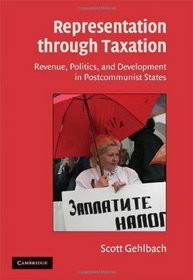How many people really support Russian protesters’ demands for a “Russia without Putin?”
This was a rallying cry for many Russian citizens who poured into Moscow’s streets in late 2011 and 2012 to express their outrage over what they branded fraudulent election results. Even though the protests were the largest Russia’s capital has seen during the Putin era, by some counts mobilizing over 100,000 in the biggest rallies, this still represents only a tiny fraction of the country’s population. But were they speaking only for themselves in calling for Putin’s removal, or did they represent a large but quiet segment of the population?
We could ask them directly in a nationwide opinion poll, but one might be left wondering: Can we really assume people are telling survey interviewers what they really think? Perhaps they would be reluctant to admit to a stranger that they want Russia’s strongman leader out.
Fortunately, social scientists have devised an interesting technique that can help us gain a truer measure of what people really think. The idea is that instead of asking people to admit directly to this view, survey researchers can instead present people with a list of five things they may or may not agree with. One of the five could be: “Street protests in Russia are right in demanding a ‘Russia without Putin.’” The other four statements could all be things about which people are unlikely to hide their views, such as “I like to read novels,” “Lenin should be removed from his mausoleum and buried,” “medical care should be free of charge,” and “a majority of politicians can be trusted.” People are then asked to look at this list of five items and to tell the survey interviewer only the number of these they agree with. That is, they are never asked to say which of the items they agree with–giving only the lump sum–so that they never actually admit to doing any one thing.
The kicker in this technique is the following: The list of five items is only given to half of the people in the survey, a half that is selected completely randomly. The other half only gets a list of the four things without the “Russia without Putin” item. This latter half of the respondents thus serves as a crucial control, telling us how many of these four items people agree with on average. This means that any difference between the average count with four items and the average count with five items comes from the fifth item, “Russia without Putin.” By comparing these two averages, then, we can estimate the share of people who agree with a “Russia without Putin” without these people ever having actually to admit to this sentiment. This technique, often called a “list count experiment” or “item count experiment,” is likely to give us a better estimate of true sentiment than if we asked directly.
This technique for discerning the level of real support for the anti-Putin element of the 2011-12 protests, using the five items mentioned above, was employed in the most recent Russian Election Studies (RES) survey, which was designed by myself and Timothy Colton and carried out in Russia by the Moscow-based Demoscope during April-May 2012 with a nationally representative sample of 1,682 adult residents of Russia.
We find that the average number of the four control items that people agree with (that is, not including “Russia without Putin”) was 2.172. The average count for those who saw all five items (including “Russia without Putin”) was indeed significantly higher: 2.394. The difference tells us that about 22 percent of the Russian people counted the protesters’ slogan of “Russia without Putin” as something they agreed with. Even though they never had to admit it.
This conclusion, that 22 percent agree with the slogan “Russia without Putin,” indicates that the protesters’ most radical demands had significant but not overwhelming support even in the spring of 2012, when the protests were still going strong. Clearly many more thought that the 2011 Duma election was flawed and should be held again: Using “ordinary” survey techniques, the RES estimates that repeat parliamentary elections were supported by about 29 percent. But even not all of them appear to have concluded from Russia’s flawed parliamentary election that Vladimir Putin himself should go. Indeed, other RES results indicate that only about 5 percent thought that a “completely honest” presidential election would have ultimately led to another candidate being elected president. The sense that there is no viable alternative to Putin despite Russia’s many problems, then, would appear alive and well in Russia today.
For up-to-date technical insights into list count experiments, see Graeme Blair and Kosuke Imai, “Statistical Analysis of List Experiments.” Political Analysis, v.20, no.1, 2012, pp.47–77.










